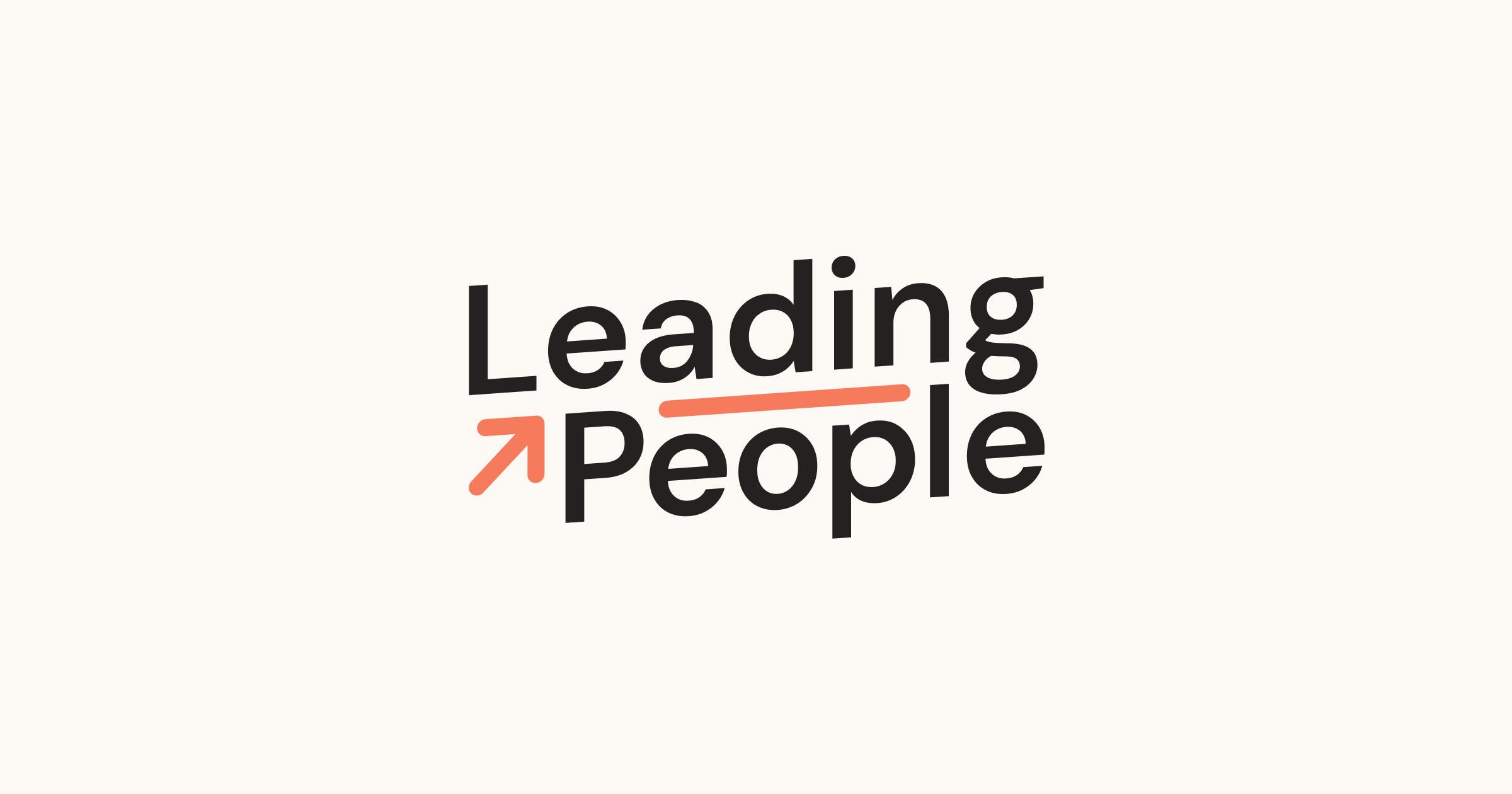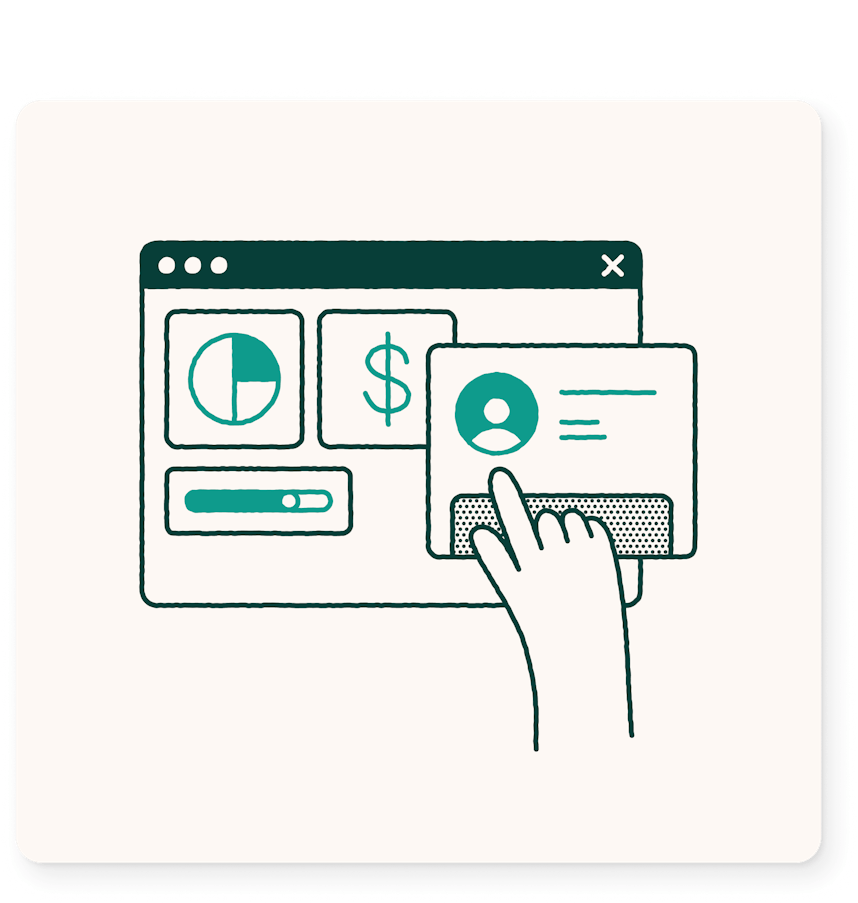A Conversation with beqom’s New CEO, Lars Pedersen

Back in November, we launched our Leading People interview series by talking with Fabio Ronga, who co-founded beqom in 2008. The company was based, Fabio said, on a vision that he wholeheartedly believed in, and it has remained quite close to this original vision to become a trailblazer in compensation management.
This winter, the time was right for Fabio to step into a new role as beqom’s Chairman of the Board, and in early January, Lars Pedersen assumed leadership as the company’s new CEO.
So for this second interview in our series, we were excited to sit down and talk with Lars as he settles into this new role during a time of great change and growth. We discuss the desire to learn as a driving force, his simple yet effective three-part leadership model, harnessing AI, and how software can help companies fight bias and reward performance.
Interview with Lars Pedersen
Key driver.Desire to learn.
Guiding principle.Leadership based on clarity, energy, and visibility.
Main focus.Help organizations make bias-free, merit-based pay and performance decisions.
This is the full length interview with Lars Pedersen.
Transcript
What was your first experience of leadership?
Lars: Very early in my career I spent a few years in academia. And then after academia, my first job was as a product manager in New York State and it was in the equipment for telecommunications applications and after I became a product manager. I think it was—I don't know—six months after or something like that, I had my first leadership role. His name is Greg so it was just one individual and it was probably just to try it out. I think maybe they saw some potential. They wanted to see if I could be a leader and that lasted for maybe another six months. And then I became VP of sales and of course I took over a bigger team and so on.
What has been the primary driving force behind your career progression?
Lars: I think increasingly careers become sort of organic or nonlinear in the sense that it's very difficult to sit down and then plan out as step number one I want to be this, and step number two I want to be something else with some sort of end in mind. I would say I never really had that; it was more opportunistic in terms of what opportunities there were and where I could see that I could fit into those opportunities. But I would say a driving force behind it all was a desire to learn. So I've always read a lot of business books and technical books within whichever field that I was working, and to get to a level where you can speak the language but maybe also be a bit of an expert in certain areas. And then by doing that on a sort of continuous basis compared with other people who don't, then you tend to pull ahead by just learning and continuing to learn. And then after you've learned, I've always tried to capture whatever that is into models and concepts that can then be deployed and always with a bit of a twist. So for instance, you can read about leadership and there are lots of leadership models but most leadership literature is from the U.S., and it's all good, but when you come from Europe and you work in Europe, it doesn't always apply.
Probably the main difference is that leadership in Europe is a bit softer than leadership in the U.S., and when you read American leadership literature, they always focus on your need to be softer. But if you do that in Europe, you end up being too soft, because it's already a bit softer, so you need to take it with a grain of salt.
So I've always read that and then twisted it and changed it and then used it in my own leadership but also in other areas.
What are your personal leadership values and how do you implement these on a daily basis?
Lars: So through all that reading and my own experience throughout the years, I have my own sort of leadership model that I use as a CEO for my own purposes. And then I'll introduce leaders in the company to this leadership model. And it's very simple as most good models should be.
So it consists of three things. As a leader you need to be clear or you need to provide clarity, which is about certainty and accuracy in terms of where the company's going to go. What ‘s the plan, what does the future look like? So it's product road maps. It's market launch plans. It's organizational changes. Clarity around those sort of bigger topics. So that's the first element and then the second element as a leader you're responsible for energy in an organization, so for your team you need to increase the energy level and of course you need to steer it in a certain direction and so on.
So it's not energy in all directions. It's energy in hopefully a positive direction. That's the second point. And then the third part of that is about visibility. So as you operate you run a particular department or a company. It's so important that you have visibility to how things are going and have all that data so you know how to react. So in other words, there are three elements, clarity, energy, and visibility. The energy piece is probably the most important of the three. But energy without clarity and visibility is chaos, it's anarchy. So of course you need the other two.
And for energy, I use a concept. I call it a "goodwill account". Think of it as in any interhuman relationship, like you and I as we're talking right now. We've spoken for about, what, 12 minutes by now. And when you do that, if you treat people with respect, maybe you're able to inspire them. Maybe they're comfortable with you. Maybe they feel that they can lean on you a little bit for advice and so on and so forth.
By doing all those things you accumulate goodwill in your account, so to speak. Some leaders are very good at that but then when the account is full then you should also spend it. So what I mean by spending it, sometimes it's crunch time, sometimes you need to ask people to step up a bit, sometimes you need to appeal to their own ambition such that for instance they learn at their own initiatives, they start learning and developing themselves. That's sort of the flip side and then as a leader you need to manage that account. So you cannot push people if it's empty in terms of goodwill, then they'll push back. But on the other hand, if you fill it up from time to time, then you're more in a position where you can push people.
So, I use that as a concept so it's almost like a bank account, they need to know how much is in there and don't just fill it up without spending it and don't just spend it without filling it up.
“As a leader, you're responsible for three elements – clarity, energy, and visibility.”
What has been your biggest learning so far?
Lars: Maybe not the biggest lesson but maybe the biggest shift in terms of how I've thought about leadership has been the first time I became a part owner of a company. When you sort of transition from just being an employee to being a part owner it changes your mindset actually quite a lot and I think mostly in a positive way. From an economics point of view there is a thing called "agency cost" and agency cost is — think of it as the difference between what owners need management to do and what management does. So does management represent the owners in the best way and in the best interest of the owners and if they don't there is an agency cost. And of course the way companies best deal with agency cost and reducing the agency cost is to make some of the managers part owners and that way there's no agency cost. So I'd say when that happened the first time, which is by the way many years ago, it sort of changes how you look at leadership and what it is you're trying to accomplish.
beqom has a unique competitive position. As a company, what impact do you hope to make in the industry?
Lars: The key word for me at least, is about merit-based performance. And with our software we are already helping people to remove unnecessary bias from decisions and we would like to increasingly do that also in other domains.
So an example of that is for instance in pay, you may have unnecessary bias in how you decide pay level for one individual versus another individual and with our software you can sort of remove those bias elements and get to a point to see whether the decision is biased or not biased. And by doing that the right way, which I think our software does, you then end up with a merit-based decision, which of course is fair. And that way our software helps our customers to become more like performance enhancing meritocracies and by highlighting decisions that are maybe inappropriate so I'd say that's the key thing.
I talked about pay as of course, historically, it has very much been our domain as a company. But I'd like to take that also into performance assessments, such that you end up having performance assessments that are more fair and you can remove all the biases and so on from those decisions as well in a very similar way as our software already does in the area of pay.
If you look at performance assessments and pay, it's almost the two most important topics in the relationship between an employee and an employer. I think if we can make those two sort of very critical points, if we can help companies make them more fair and more merit-based, then through that we can help improve the performance of our customers.
There are factors that are fair. Performance is a fair factor in that if somebody's doing better than somebody else if that individual is paid more then that's properly fair. And of course there may be location in the sense that there may be a high cost market versus a lower cost market where it's fair that somebody's paid more in a high cost market than a low cost market and so on and so forth. So you can take all those factors and when you remove those factors if there's still a gap then it's unfair bias and then you can eliminate the remaining gap after you factored all the other things into account.
So I think by following that logic I hope to help our customers make merit-based decisions.
As a tech company, what do you think is the key to growth and innovation?
Lars: First of all it's a very difficult thing to do. So maybe I can quote another book I talk about reading before and so on that there's a researcher called Von Hippel who's written a lot about innovation and according to his studies and so on about 90% of innovation if you try to look for where it came from then in 90% of the cases it originates with a customer somewhere. So, a customer that has some sort of problem, they're trying to solve it. Maybe they solve it in an Excel sheet and then they talk to a software company like beqom and then maybe we take whatever is in that Excel sheet and we productize it and put it into our software. So, I think that's the main source of innovation and the key way you can sort of keep up with the market.
It's very difficult to do though because if you sit a group of customers down and say, hey what do you think we should add to the software quite often hardly anything comes across because they operate in their domain and so on and it's a bit siloed within their part of the universe. Which means that another very important source of ideas and so on is where you use your product yourself. So what I mean by that is that you sort of immerse yourself with customers and you start using it in the context of the customer, but it's you as the provider who does it, and then by doing that you start getting ideas by just using the software yourself.
So I think that's the other thing. So yes, listen to customers, ask them questions and so on and so forth, but also immerse yourself into the customer setting such that you almost act as if you're the customer.
Trends like AI and pay transparency are completely reshaping the HR landscape. How can companies turn them into competitive advantage?
Lars: The thing with pay transparency it’s in the domain of pay equity and fairness in terms of those decisions and so it's very much along the topic I talked about before, and so new regulation as you're aware is going to hit the market and of course companies have to meet that regulation. So it's not an option, they just have to. But of course the smart companies will then do that but they'll do it in a way where they can get a benefit from it.
So I think all of that comes back to what I mentioned before. It's just one element in that regard and yes AI can help. Of course not AI for AI's sake, but it’s tool like other tools. It's a very powerful tool but of course use it when it's appropriate. Don't use it when it's not appropriate.
So in the area of pay there are some domains where AI is hard to use because of course AI is about learning from data, and then you automate workflows and so on in AI agents which of course is brilliant. But then the question is does it have access to the data. Then of course if the data pool is just within one company it may not learn enough but then at the same time you cannot have an AI agent tap into many of our customers data and so on, they would never allow us to do that.
Where it is right now is it’s very good at coming up with an okay solution. It's not very good at coming up with a perfect solution. So to get to something that's kind of good enough, AI is very good at that, but it's not yet good enough at coming up with something that is fully good enough, so that final gap – that goes for coding, it goes for even language – if it writes something, you have to look at it and then you need to review it. And then to close that gap in many domains if you don't have the knowledge to do that then it's almost like the AI is in the way.
So I'm a big believer in AI and the benefits of AI but also very clear on not to use it in certain domains just I feel that some companies they use it just to say that they have it. And I think that's counterproductive in my opinion. At the end of the day, it's just a tool.

About the series
This interview is part of the video series Leading People, where we sit down with the minds shaping the future of HR. beqom executives and other industry leaders share their personal journeys, discuss key challenges and successes, and offer unique insights on the evolving role of HR in today’s world.

About Lars Pedersen
Lars Pedersen is the CEO of beqom. He comes to this role with over 25 years of experience in scaling software businesses and driving transformative growth. Lars has served as CEO of nShift, Questionmark, Creditcall, CommProve Ltd., and RESON Inc., and he has been President of Network Merchants (NMI) and Amritsu Instruments Group. His wide variety of other roles include VP of sales, VP of R&D, CTO, and VP of project management. Lars holds a MS in Electrical Engineering and a PhD in Fiber Optics, both from the Technical University of Denmark.
Learn more about beqom's total compensation solutions
For more information about beqom’s solutions for managing total compensation, performance, and pay equity contact our experts to tell us your challenges or request a demo.












